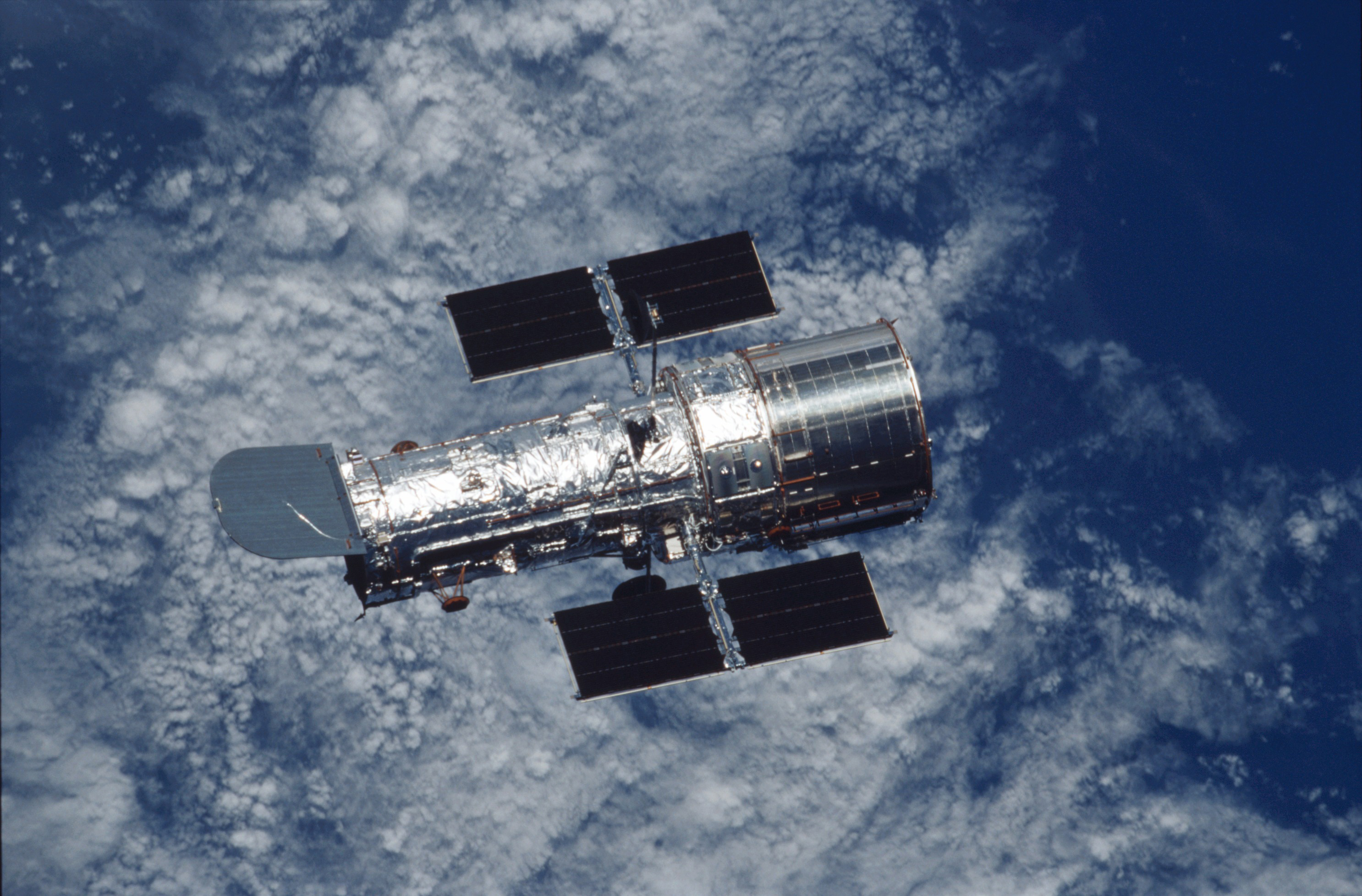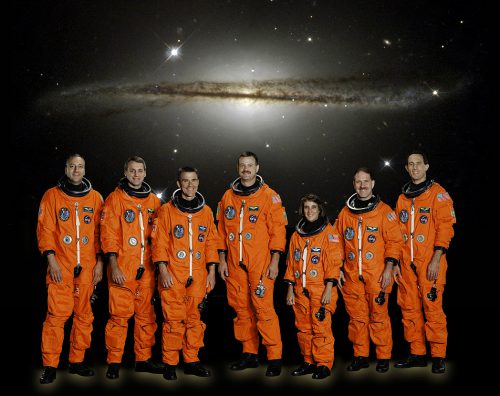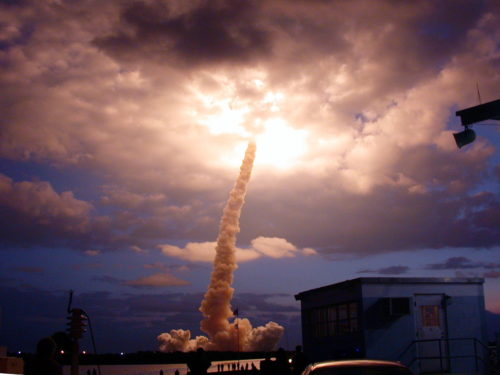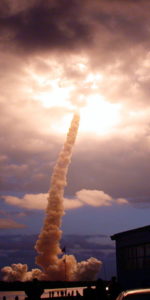
Fifteen years ago, next week, Columbia roared into orbit on her final wholly-successful mission, STS-109. It was the 27th flight of a vehicle which had ushered in the dawn of the Space Shuttle era, back in April 1981, and gone on to secure a raft of other accomplishments: becoming the first piloted spacecraft to return to low-Earth orbit, the first to deploy satellites, the first to carry the European Spacelab research facility and the first to be commanded by a woman. Throughout her career, Columbia had flown both the shortest and the longest shuttle missions and even today, more than a decade after her untimely demise, she is the third-most-flown member of the fleet, having spent over 300 days in space and carried into orbit 126 men and women from the United States, Germany, Canada, Japan, Switzerland, Italy, France and Israel.
For a time at the turn of the millennium, however, Columbia’s illustrious past seemed to overwhelm the likelihood of an exciting future. As the oldest and heaviest orbiter, she had been bypassed for International Space Station (ISS) assembly missions and was being held in reserve for “standalone” research missions and repair and servicing visits to NASA’s iconic Hubble Space Telescope (HST). Following her 26th mission in July 1999, Columbia entered a protracted period of maintenance and refurbishment at prime contractor Rockwell’s facility in Palmdale, Calif., and did not return to the Kennedy Space Center (KSC) in Florida to resume mission preparations until March 2001.
From the outside, she looked virtually the same as she had for the last two decades, but internally Columbia had been heavily upgraded, not least by the addition of the Multifunction Electronic Display Subsystem (MEDS)—a “glass cockpit” of instruments to replace her outdated suite of electromechanical gauges—and the shaving-off of around 1,100 pounds (500 kg) of weight. In the hope that she would be capable of supporting some ISS assembly, her airlock, previously situated within the middeck envelope of her crew cabin, was moved “externally”, situated in the forward payload bay.

Ahead lay two ambitious flights, both of which would jockey for position in the coming years. In September 2000, “rookie” astronaut Massimino and three seasoned NASA veterans—John Grunsfeld, Jim Newman and Rick Linnehan—were named to STS-109, the fourth Hubble servicing mission, then scheduled to launch aboard Columbia late in 2001. They would support as many as five spacewalks to replace the telescope’s aging solar arrays and install new scientific instruments. At the same time, astronauts Mike Anderson, Kalpana Chawla, Dave Brown and Laurel Clark were named to another scheduled Columbia flight, STS-107, then targeted to fly ahead of STS-109, in August 2001.
As history has taught us, one of those missions would bring its crew safely home; the other would not. And in the mind of STS-109 Mission Specialist Mike Massimino, writing in his memoir, Spaceman, it left little doubt that flying the shuttle was a game of Russian roulette. “It was time for something to happen,” he wrote, “and you were grateful that your number hadn’t come up.”
Three weeks after Columbia returned to KSC in March 2001, the remainder of the STS-109 crew was announced. Commanding the 11-day flight was Scott “Scooter” Altman, accompanied on the flight deck by pilot Duane “Digger” Carey and flight engineer Nancy Currie; the latter would also operate the shuttle’s Canadian-built Remote Manipulator System (RMS) mechanical arm to capture and redeploy Hubble and to provide critical support during the five complex Extravehicular Activities (EVAs).
Although STS-109 was the fourth Hubble Servicing Mission, it was actually numerically designated “SM-3B”, because it formed the second half of what was originally planned for a single shuttle flight. In July 1998, NASA assigned crew members to support a record-breaking six EVAs to install the new solar arrays, new instruments and perform other upgrades to Hubble. Planned for June 2000, unanticipated failures aboard Hubble caused the mission to be split into two halves, with “SM-3A” performing the most critical work to keep the telescope functional in December 1999 and “SM-3B” following a couple of years later to carry out the remaining tasks. John Grunsfeld had flown aboard 3A and it made sense to retain his expertise on the 3B crew.
In terms of priority, the STS-109 crew would replace Hubble’s Power Control Unit (PCU), which both Lead Flight Director Bryan Austin and NASA Associate Administrator for Space Science Ed Weiler regarded as nothing less than “open-heart surgery” on the telescope. Weeks before launch, the astronauts were summoned before NASA Administrator Dan Goldin and told, in no uncertain terms, that failure really wasn’t an option on SM-3B. “Hubble is very, very near and dear to a number of people,” he explained, “so we have been impressed with that responsibility.”
After the PCU replacement, the crew would install a new Advanced Camera for Surveys (ACS) and a cryocooler to support the Near-Infrared Camera and Multi-Object Spectrometer (NICMOS). The latter had run out of its liquid nitrogen coolant and been shut down shortly after being installed aboard the telescope and the new cryocooler would give it a new lease of life. Additional tasks included the replacement of Hubble’s window-blind-like solar arrays with smaller, higher-capacity, rigidized versions. For more than a year, Grunsfeld, Newman, Linnehan and Massimino devoted at least 12 underwater training hours to each of their planned 30 hours of spacewalks.

Although STS-107 was set to be Columbia’s first flight, delays in the orbiter’s return to KSC and priority issues led to STS-109 being juggled ahead in the pecking order, tracking an opening launch attempt in mid-February 2002. This was postponed by two weeks, due to a problem with Hubble’s reaction wheels and the need for additional training time, and poor weather conspired to delay the launch still further until 1 March.
At 7:45 a.m., Altman led Carey, Grunsfeld, Currie, Linnehan, Newman and Massimino departed the Operations & Checkout (O&C) Building at the Cape, bound for a waiting Columbia on Pad 39A. This historic complex—which, at that time, had seen all but one of the Saturn V launches, as well as dozens of shuttle flights—re-entered the limelight last Sunday, hosting its first Upgraded Falcon 9 launch for SpaceX. But, significantly for STS-109, 1 March 2002 was the second-to-last time that Columbia ever launched from Pad 39A. In spite of a possibility that a broken deck of clouds could form below 8,000 feet (2,400 meters), conditions were picture-perfect.
“Lying on our backs,” wrote John Grunsfeld in one of his NASA-authorized diary entries for the mission, “fully dressed in our orange suits and parachutes, the wait for liftoff was not particularly comfortable. As the count progressed, it was clear to us that any concerns about clouds or winds were not going to stop our trip up to Hubble. On board Columbia, we worked through our procedures down to the last couple of minutes. Then it was up to the computers on Columbia, the main engines and finally the boosters. In the last six seconds, the main engines announced that they were ready to rock and roll.”
With the ignition of the two Solid Rocket Boosters (SRBs) at T-0, it was clear to the entire crew that “we were getting outta town in a hurry”. On the ground, it was 6:22:02 a.m. EST, right on the opening of that day’s 62-minute “launch window” and STS-109 rose on a pillar of golden flame into the pre-dawn sky. From his seat on the flight deck, Grunsfeld could see through the windows the sheer velocity at which the shuttle was traveling: clouds zipping past, the darkened sky changing into daylight and sunlight bursting into the cabin. From the pilot’s seat, “rookie” astronaut Duane “Digger” Carey noticed how hard it was to talk—a sort of guttural grunting was necessary at high-G stages of the ascent—but had no difficulty in reaching for controls and switches.
High above them, sailing about 360 miles (580 km) over Sarasota was Hubble, waiting for its next group of human visitors.
The second part of this article will appear tomorrow.
Be sure to “LIKE” AmericaSpace on Facebook and follow us on Instagram & Twitter!






Hail Columbia!